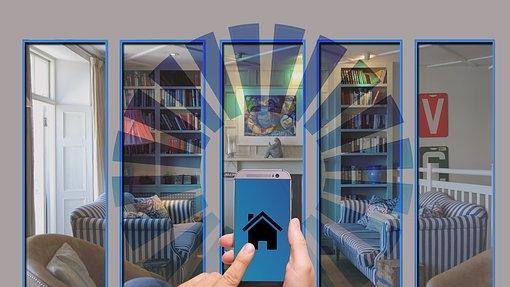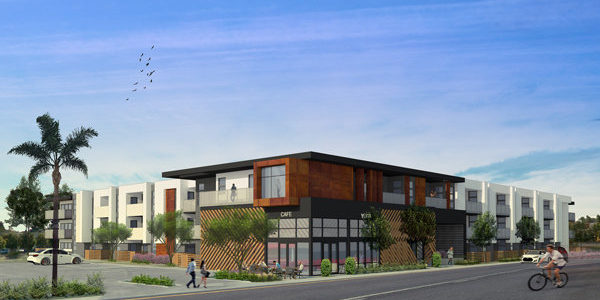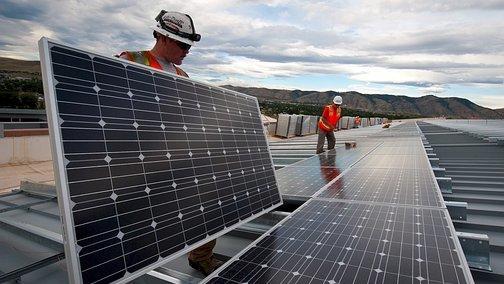La Jolla is home to restaurants, shops, art galleries, fitness studios, coffee shops and salons — but no specialty market. This will change in 2019, thanks to a partnership between two San Diego-based companies, Murfey Company and Valley Farm Market.
A new family-owned market, featuring high quality, affordable grocery items and prepared foods will open on the corner of La Jolla Boulevard and Nautilus Street in late 2019, fulfilling a decades-long wish of many La Jolla residents.
Murfey Company, a local developer and builder, is in the midst of a multi-million dollar renovation of the 18,330-square-foot property on the corner of La Jolla Boulevard and Nautilus. The former Nautilus Professional Building at 6902 La Jolla Blvd. will be transformed into a mixed-use luxury apartment complex with 15 one- and two-bedroom rentals, all with ocean views, and ground floor retail space.
The 5,000-square-foot retail space in the WindanSea area of La Jolla will be home to the second Valley Farm Market location, established in 1956 in Spring Valley by Felix and Eleanor Marso, and now run by Felix and Eleanor’s grandson, Derek Marso.
“Valley Farm Market is San Diego’s best kept secret,” said La Jolla resident Garett DiLandri, “and as a foodie I’m thrilled that Derek and his family are bringing their market’s traditions to our neighborhood. Great food, great people.”
The market sells organic produce, USDA prime meat in its well-known in-house butcher shop, sustainable seafood, wine and craft beer. It specializes in prepared foods, including a gourmet deli and award-winning barbeque. Marso truly cares about the customer experience, and Valley Farm Market has been an important part of the Spring Valley community for more than 60 years, hosting community events and supporting local charities and youth sports teams.
“This is a family business, and we are here to serve the community,” Marso said about his new La Jolla location.
“I’m going to be a part of the community. I want to be involved in Little League, the schools — whatever the community needs. I truly want to offer a great product for the best value. I feel a leader is one who serves, and I’m looking forward to doing that in La Jolla,” Marso said.
When Felix and Eleanor Marso opened Valley Farm Market in 1956, their four children helped operate the business, sweeping the parking lot, washing vegetables and sorting bottles. Derek, a former Kansas State University defensive end who played in the NFL, is now the third generation to own Valley Farm Market. Marso is a butcher who continued his father’s focus on barbecue with the Valley Farm Market BBQ Shack, which serves barbeque plates and brisket, pulled pork, tri-tip and sides by the pound. In September 2018, Valley Farm BBQ was named “San Diego’s Best BBQ” by iHeart Radio.
Marso’s minority partner in the new store is Shawn Walchef, who also grew up in La Jolla.
Valley Farm Market is not the first partnership between Marso and Walchef. For the last nine years the two friends have hosted annual festivals, organized charity events and produced a weekly podcast.
One of the primary beneficiaries of Marso and Walchef’s fundraising is Organizations in Training, a San Diego-based nonprofit that provides leadership training to youth, parents and families facing extreme adversity. The nonprofit’s chairman, Shane Walton, is a former NFL player who attended The Bishop’s School and is now the school’s assistant director of athletics.
Walchef said he’s looking forward to bringing a community grocery store and quality meat market to La Jolla. More than anything, however, Walchef and Marso are eager to add value to the community.
“[Derek] cares about every guest that walks in his stores in a way that inspires his team to follow his example,” Walchef said.
“Our goal is to create a new space in La Jolla that makes shoppers feel not only appreciated while they are shopping but even better when they get home and feed their families with our selection,” he said.
The departure of Jonathan’s Market in 2014 left La Jolla without a store offering high-end grocery products. Marso and Walchef’s vision for the new store is a one-stop-shop for high-end butcher items, marinated meats, to-go dishes, rotisserie chicken, fine cheeses, fresh produce and specialty items like their famous poke dishes.
Valley Farm Market’s new location will offer gourmet food and wine along with items you can’t find anywhere else — right in the heart of La Jolla.
— Business Spotlight features commercial enterprises that support La Jolla Light.
This article originally appeared in The La Jolla Light










